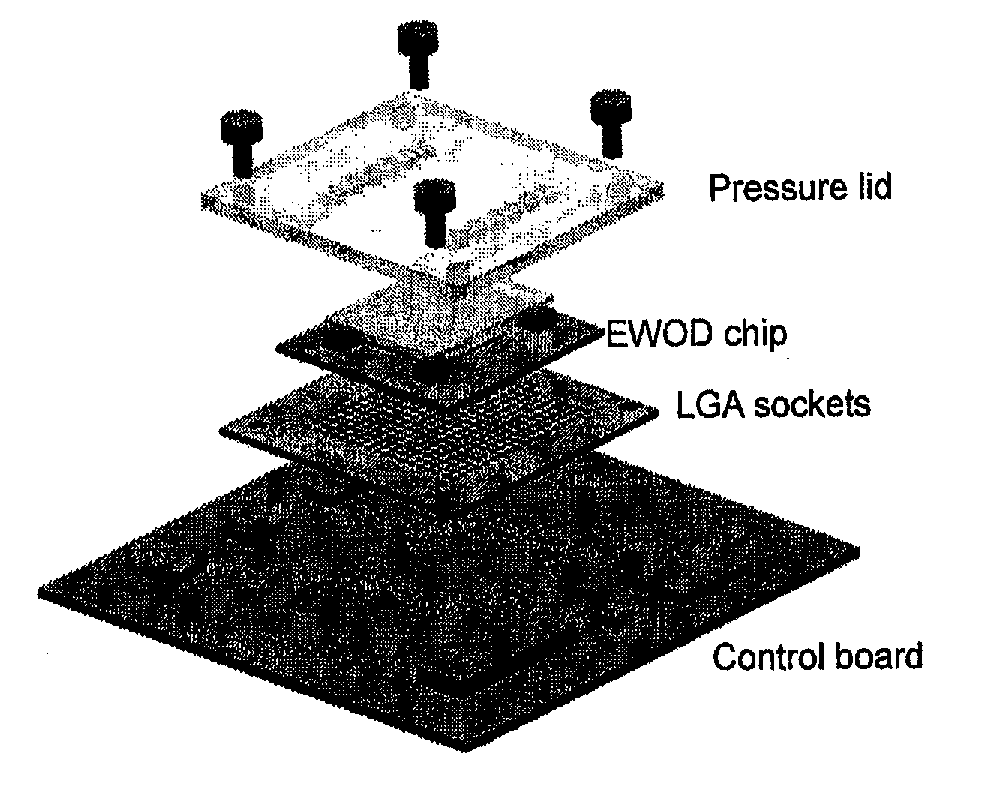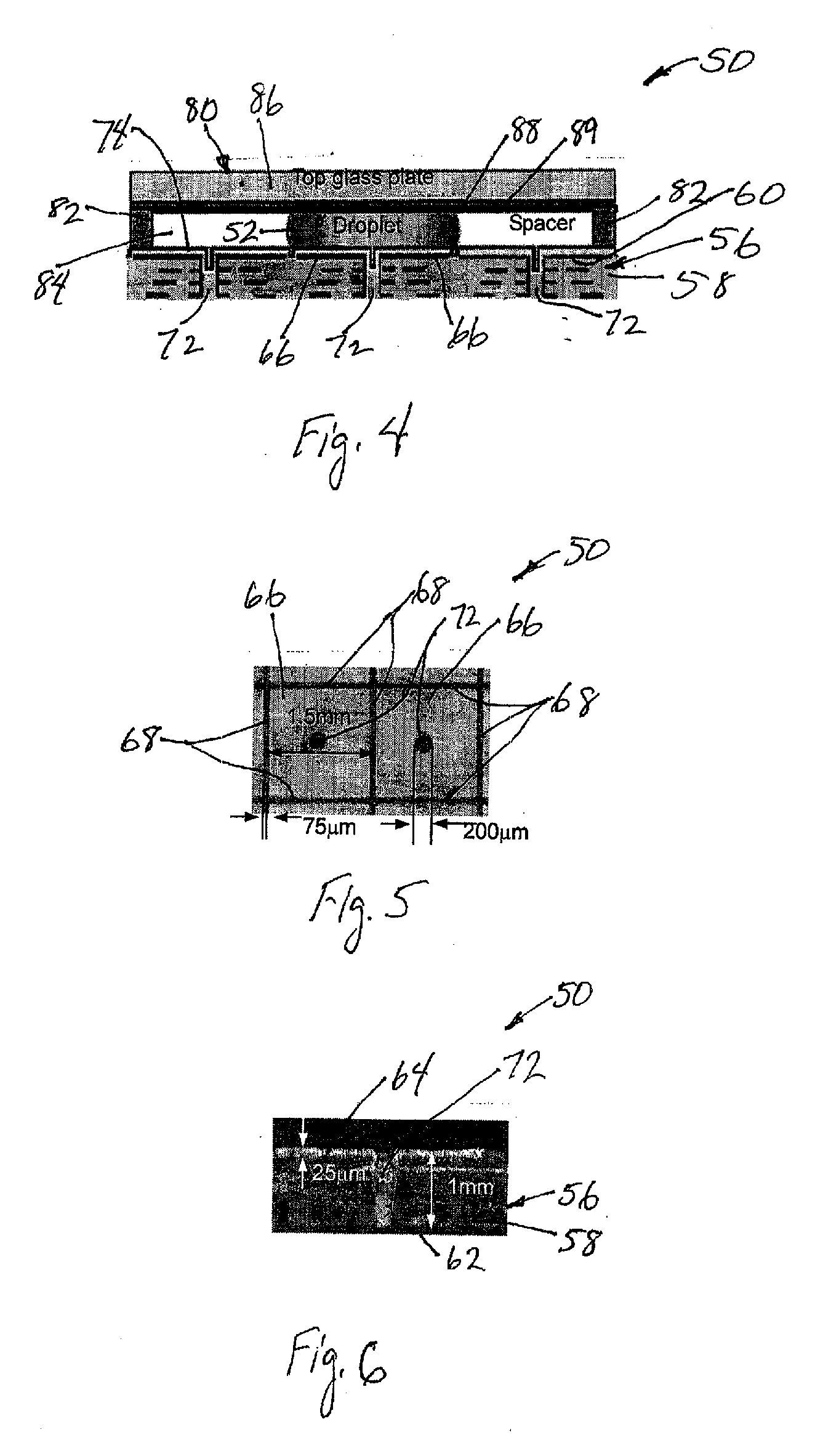Small object moving on printed circuit board
a printed circuit board and small object technology, applied in the field of manipulating small objects, can solve the problems of high operating voltage, power consumption and high operating voltage, complex, etc., and achieve the effects of improving the efficiency of the electrokinetic mechanism
- Summary
- Abstract
- Description
- Claims
- Application Information
AI Technical Summary
Benefits of technology
Problems solved by technology
Method used
Image
Examples
example
[0044] Referring to FIGS. 4-6, a specific example of a digital microfluidic system 50 according to the present invention will be described. The system 50 is physically configured as schematically shown in FIG. 4 and as described above. The PCB 56 has substrate 58 formed of FR4 and having an overall thickness of about 1 mm. The top conductive layer 64 is 25 μm thick copper. The array of electrode pads 66 formed by etching into an 8×8 rectangular array. Each electrode pad 66 has a square shape which is 1.5 mm wide. The gap 68 between the perimeter of each electrode 66 and the perimeter of each adjacent electrode is 75 μm. The vias 72 have a diameter of 200 μm.
[0045] The dielectric layer 70 is formed of a 5000 Angstrom (“Å”) thick layer of Parylene C applied by conformal, room temperature deposition. Over the dielectric layer, the hydrophobic layer 74 is a 2000 Å thick layer of FC75 AF1600 Teflon which is spin coated on top to make the surface more hydrophobic (resulting in a contact ...
PUM
| Property | Measurement | Unit |
|---|---|---|
| perimeters | aaaaa | aaaaa |
| perimeters | aaaaa | aaaaa |
| thickness | aaaaa | aaaaa |
Abstract
Description
Claims
Application Information
 Login to View More
Login to View More - R&D
- Intellectual Property
- Life Sciences
- Materials
- Tech Scout
- Unparalleled Data Quality
- Higher Quality Content
- 60% Fewer Hallucinations
Browse by: Latest US Patents, China's latest patents, Technical Efficacy Thesaurus, Application Domain, Technology Topic, Popular Technical Reports.
© 2025 PatSnap. All rights reserved.Legal|Privacy policy|Modern Slavery Act Transparency Statement|Sitemap|About US| Contact US: help@patsnap.com



